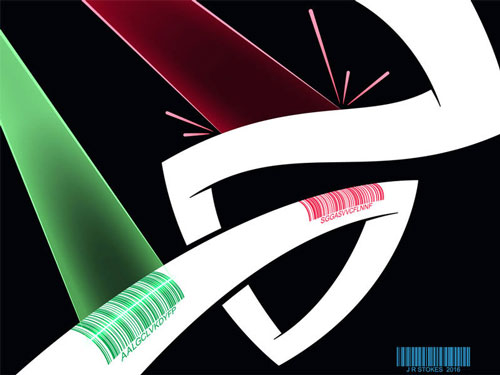| Aug 25, 2016 |
A look at the molecular quality assurance within cells
|
|
(Nanowerk News) Proteins fulfill vital functions in our body. They transport substances, combat pathogens, and function as catalysts. In order for these processes to function reliably, proteins must adopt a defined three-dimensional structure. Molecular "folding assistants", called chaperones, aid and scrutinize these structuring processes. With participation from the Technical University of Munich (TUM), a team of researchers has now revealed how chaperones identify particularly harmful errors in this structuring process. The findings were published in the scientific journal Molecular Cell ("Members of the Hsp70 Family Recognize Distinct Types of Sequences to Execute ER Quality Control").
|
 |
| A look at the molecular quality assurance within cells. (Illustration: Joshua Stokes, St. Jude Children’s Research Hospital)
|
|
Chaperones are a kind of Technical Inspection Authority for cells. They are proteins that inspect other proteins for quality defects before they are allowed to leave the cell.
|
|
If a car does not pass its technical inspection, it implies that it has severe defects that could lead to serious accidents. If a protein folds into a faulty structure, this may lead to serious diseases. Examples of these are neurodegenerative disorders such as Alzheimer's, but also metabolic diseases such as cystic fibrosis and diabetes.
|
|
Matthias Feige, professor for cellular protein biochemistry at the TUM, worked within a team headed by Linda Hendershot at St. Jude Children’s Research Hospital in Memphis/TN, USA, to investigate how chaperones identify structurally flawed proteins. In the study, the scientists focused on proteins which are produced in a part of the cell called the endoplasmic reticulum. "We are mainly interested in cellular protein folding", explains Feige. "How the self-organization of proteins occurs at the molecular level – and how cells identify errors in this process – is a truly fascinating question."
|
|
Defective proteins need to be eliminated by the cell
|
|
The endoplasmic reticulum consists of a network of hollow spaces and tubules. It is specialized in protein folding and the quality control for this process, and a third of all human proteins are produced here. Just like in any production process, errors may occur: Proteins form a folding core mostly made up of hydrophobic (water-repellent) amino acids, around which the rest of the protein is able to structure itself. However, if errors occur in the folding process, these hydrophobic areas may not be buried in the core, but instead be exposed on the surface of a protein where they may result in proteins clumping together. This can become hazardous to the cell or the entire organism.
|
|
Into the cell via a shuttle
|
|
Thus far, scientists knew that chaperones were able to identify general hydrophobic amino acid sequences if they remained exposed on protein surfaces. However, not all proteins which present such sequences should necessarily be degraded. That is because not all proteins with hydrophobic amino acid sequences on the surface are defective. How exactly the cell decides if a protein is so dangerous that it needs to be eliminated remained a mystery.
|
|
The researchers developed a new method which made it possible to observe the behavior of chaperones in the living biological system of the cell. To do this, they inserted precisely defined sequences of amino acids, which are the building blocks of proteins, into a shuttle system that transported them into the endoplasmic reticulum within the cell. Via this ingenious trick, they were able to observe, under biologically relevant conditions, which sequences the various chaperones recognized.
|
|
Two classes of chaperones
|
|
What they discovered was that there existed not only one, but two classes of chaperones in the endoplasmic reticulum, each of which identifies different types of hydrophobic amino acid sequences. Furthermore, the sequences identified by the chaperones of the second class, which are described in this journal article for the first time, form particularly dangerous clumps in the cell. Once they are identified, the proteins possessing them can be eliminated rapidly.
|
|
"This is an important piece in the puzzle of how molecular quality control functions", says Feige. "Follow-up studies will now be required to see how the chaperones recognize their target sequences on a structural level."
|
|
This research is also important for the biotechnological production of proteins, such as antibodies. In order to prevent these pharmaceutical products from being broken down by the body too quickly, biotechnologists can now ensure that the corresponding sequences do not appear on the surface of the proteins.
|

